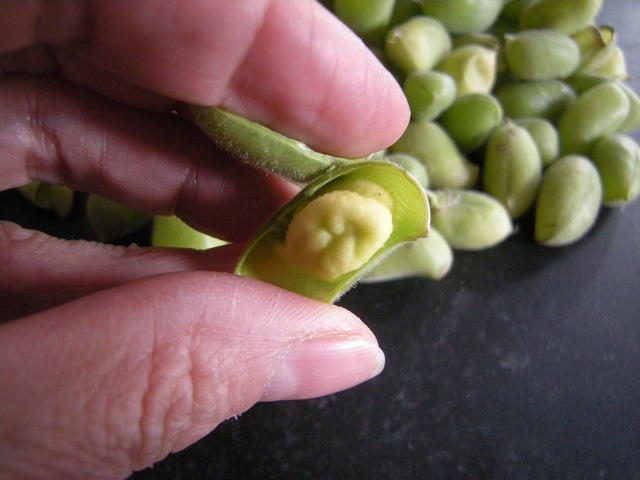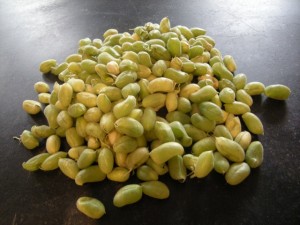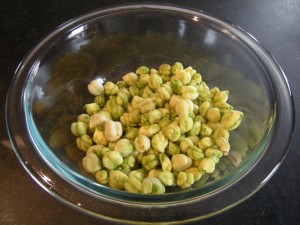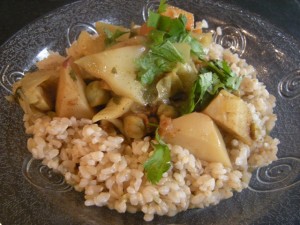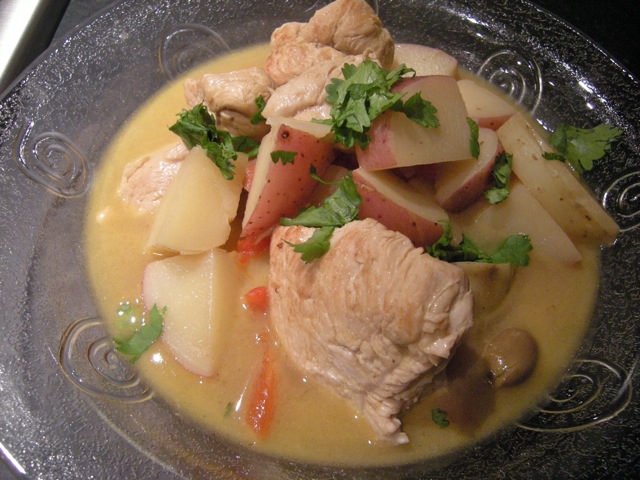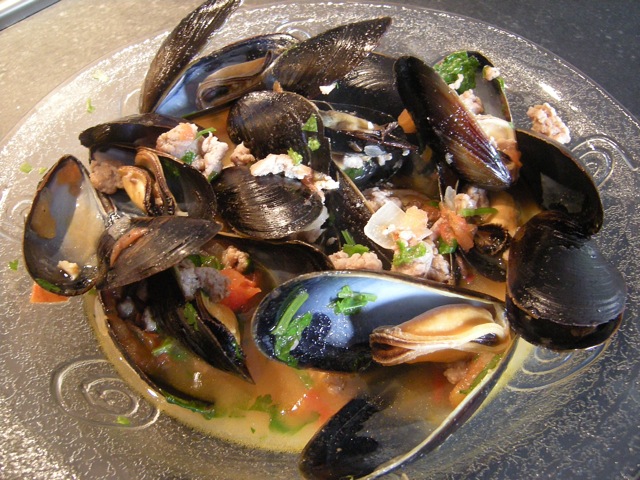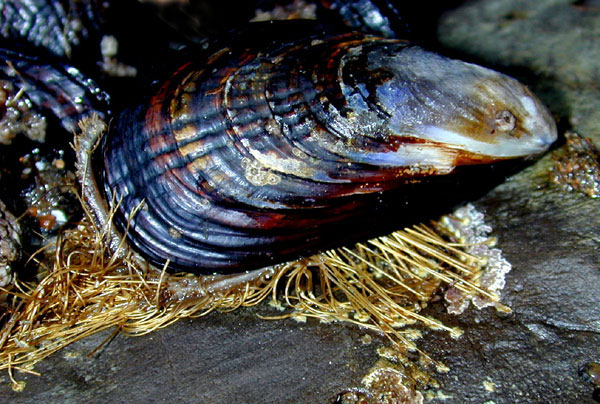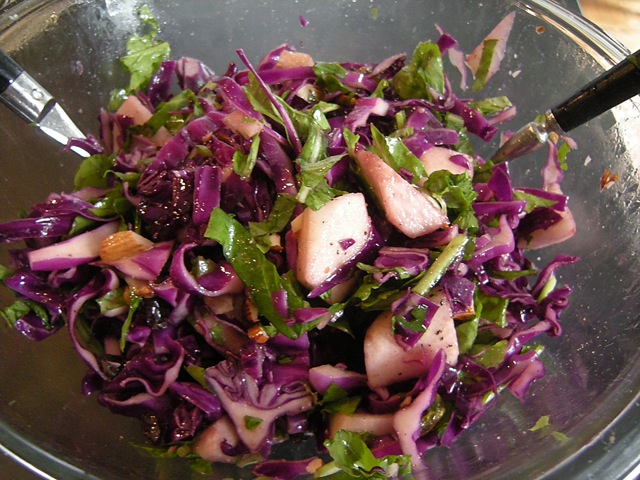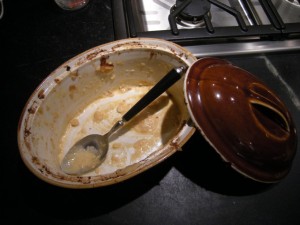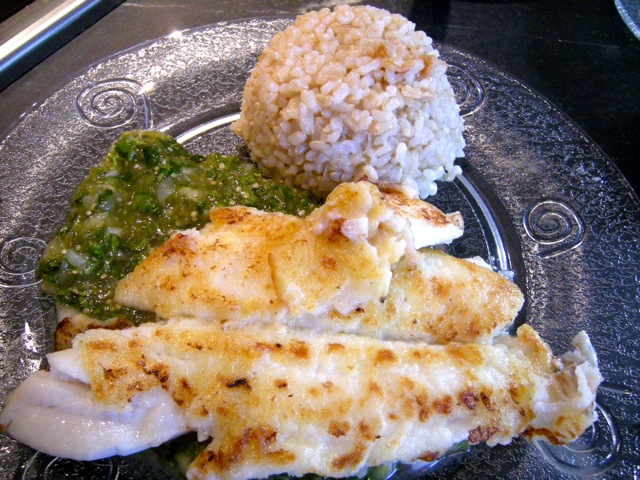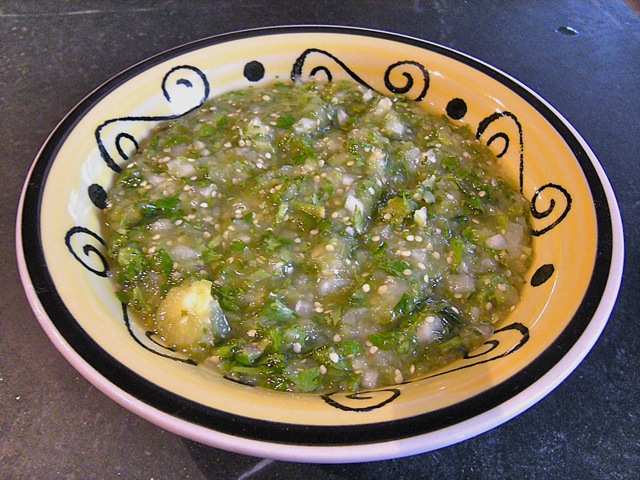Until then I had seen them only naked, brown and dry; but on Saturday I got to see them dressed, green and fresh! How on earth did I miss seeing fresh chickpeas in their full regalia until that day? I am a little embarrassed to admit to it, but as the French saying goes: un moment de honte est vite passé —a moment of shame is soon over! & the excitement makes up for the embarrassment!
We had planned to meet our BlogoBung friends Larry Litt and Eleanor Heartney for a food tour in Jackson Heights, Queens —their neighborhood for 10 years, and often called one of the most exotic places in New York City. After a delightful & tasty two hour aperitif of talking, munching — on Larry’s appetizing homemade Hummus & Salmon patés — & sipping Lillet at their house we went out for a wonderful Indian meal at Mehfil a Gujurati style restaurant.
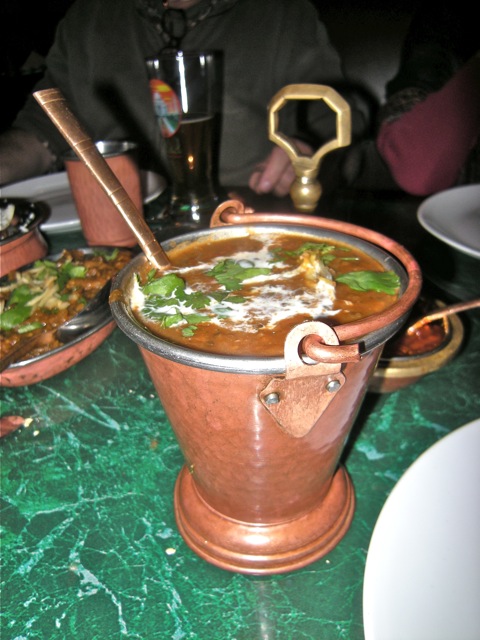
I had Dhal Makhini —creamy black lentils sautéed in butter with freshly ground spices— a restorative dish full of flavors with wonderful fresh coriander overtones that helped me get over my jet-lag. I got a taste of Eleanor and Larry’s delicate Tandoori Salmon & of Pierre’s rather bland Lamb Pasanda. Then we went for a walk and stopped at Patel Brothers —37-27 74th Street, (718) 898-3445 —“the granddaddy” of Indian groceries as quoted by the New York Times. That is where I discovered the fresh chickpeas. First, I saw them in the freezer, I grabbed a bag as I had never seen them green before, but Larry said “Wait! they’ll have them fresh in the produce section”. Larry knows the store like the palm of his hand and sure enough, here were the little green pods of hara chana —green chickpeas.
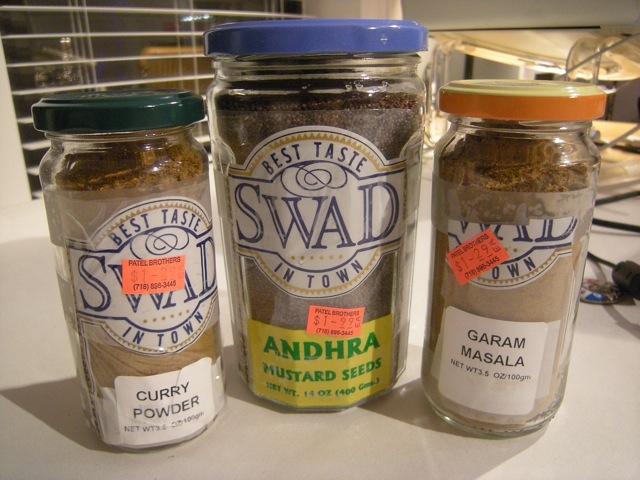
I filled up half a bag while Pierre, guided by Larry’s expertise, selected Garam Masala & Curry powders. We also got mustard seeds, fresh turmeric, black lentils & Arrow Root flour—I like it to make beurre manié, it is much lighter than wheat flour and gives the sauce a smoother consistency (a good option for my friend Anne B.!). Anyhow we took leave of our friends, our minds —and stomachs— filled with colors & scents.
Tuesday I finally got around to shell the peas for lunch. I am glad Pierre assisted me because unlike any other shell beans I know of, chickpeas have one pea per pod, only very occasionally two! A time consuming task that I would recommend doing while watching a good documentary or hire your guests while having aperitifs! (the fresh chick peas take no time to cook at all)
Once shelled, it turned out to be a small quantity so I decided to improvise a version of a Hara Chana (green chickpeas), Aloo (potato), Patha gobi (cabbage) and Gajar (carrots) curry that turned out to be best vegetable stew I ever made. I think I was still very inspired by the tastes of the lentil dish I had. The fresh chickpeas are very tender with a subtle nutty flavor and a very smooth texture. Enhanced by the fragrant –medium hot—spices, this combination brings up a remarkable and specific savor. Once again I have to say that the decision of what to put in was made by default! Except for the chickpeas and the spices I literally gathered what was left over in the fridge and that was:
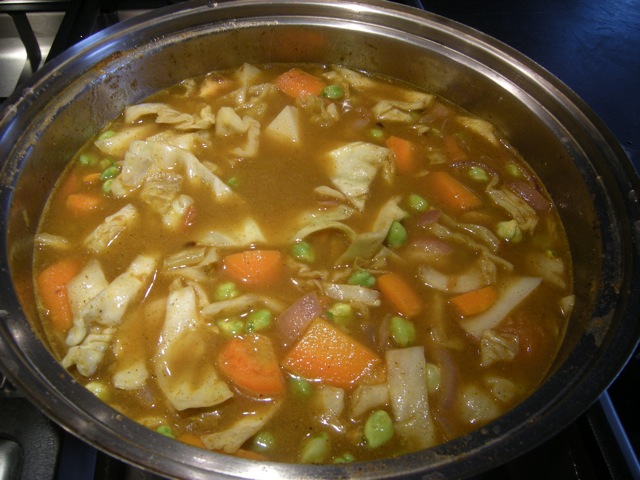
½ onion, diced
1 big carrot , diced
¼ cabbage, cut thick julienne
1 potato, diced
2 garlic cloves, slivered
½ bunch of cilantro, roughly chopped
1 small piece of fresh turmeric, minced),
1 small piece of fresh ginger, minced
1 tablespoon of Garam Masala
1 tablespoon of Curry powder
Salt/Black pepper /Water or vegetable broth.
Coat a skillet with olive oil —ghee would have been better but I didn’t have enough butter in my fridge to make clarified butter,— and under medium heat sauté the onions until soft.
Add all the vegetables including turmeric, ginger and garlic, sauté for a couple of minutes.
Add the garam Masala & Curry powder, salt and pepper. Mix well and add water to barely cover the veggies.
Once the liquid starts boiling, reduce heat, cover and let simmer for 15/20 minutes or until the potatoes are soft.
I served it with brown rice —Indian style rice would be obviously better, but that is what I had available— and garnish with fresh cilantro. Namasté to Larry Eleanor!


